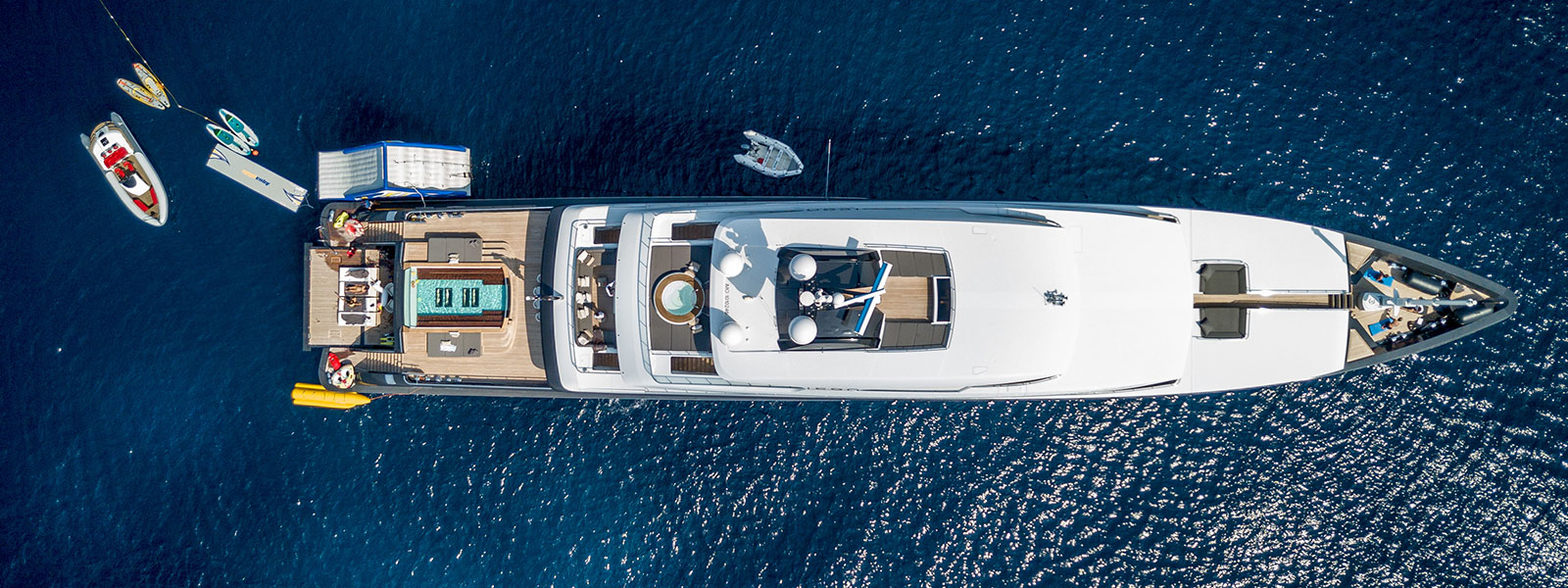⚓ Italy 2025: Legally Secure Yacht Operation Amid Changing Tax and Customs Rules
Italy has long been an attractive jurisdiction for yacht owners seeking to benefit from simplified VAT regimes.
However, following revisions by the Italian tax authorities and EU directives, the legal landscape has significantly changed.
Today, operating a yacht under the Italian flag requires careful planning and detailed documentation.
🛥️ Current VAT Rules for Yacht Owners in Italy
Since 1 November 2020, new VAT regulations have applied to charter and leasing contracts:
- Charter contracts signed before 1 November 2020
Still benefit from the previous flat-rate VAT scheme (e.g. 6.6% for yachts over 24 m), regardless of the yacht’s actual area of use. - Charter contracts signed after 1 November 2020
VAT is now calculated based on the actual use of the yacht within EU waters.
Owners must provide detailed logs (e.g. GPS tracks, logbooks) to verify the proportion of time spent outside EU territory.
These changes apply to both short-term charter agreements and long-term leasing or operational models.
The documentation requirements have increased significantly.
⚠️ New Obligations for Tax Representatives & Non-EU Yacht Imports (from 2025)
Starting in 2025, additional obligations will apply in Italy for yacht owners:
- Tax representative requirement
Yacht owners not resident in Italy must appoint a locally based tax representative responsible for meeting all relevant VAT obligations. - Customs procedures for non-EU-flagged yachts
Yachts registered outside the EU must now comply with stricter customs entry requirements when entering Italy – including detailed documentation and declaration procedures.
These changes significantly increase the administrative burden and legal complexity for non-resident owners.
⚠️ Key Challenges and Legal Risks
Yacht owners should be aware of several critical risk factors:
- Increased documentation pressure
Precise and verifiable records of yacht usage (within and outside EU waters) are mandatory. - Tax exposure
Without proper documentation, the Italian authorities may impose the full VAT rate of 22% on the entire leasing or charter amount. - Missing “EU VAT Paid” certificate
In some cases, owners receive only proof of VAT on the final purchase option – not sufficient to ensure resaleability or re-flagging across the EU.
✅ Our Recommendation
For owners whose yachts operate primarily within the EU, the current Italian lease model entails significant tax risk and administrative overhead.
We recommend considering alternative EU-based models that offer legally secure and tax-efficient use structures.
We provide full-service legal and strategic support for:
- selecting the appropriate operating model,
- implementing compliance,
- and navigating the Italian legal and tax environment effectively.
📞 Contact Us
We would be pleased to discuss your individual project:
- Phone: +49 – 69 / 663 779 0
- Email: mail@der-yacht-anwalt.de
We look forward to advising you on your yacht project in Italy – reliably and with clarity.
⚖️ The Italian Yacht Lease Model – Status 2025
The Italian yacht lease model was once regarded as a tax-efficient method of yacht operation under a reduced VAT scheme. Those days are over. Since 1 November 2020, the legal framework has changed significantly – and will be further tightened from 2025:
🛥️ What currently applies?
Contracts signed before 1 November 2020:
- Still valid under the previous scheme (flat-rate VAT, e.g. 6.6%)
- Accepted until the end of the contract term,
but not renewable under the same conditions
Contracts signed after 1 November 2020:
- Flat-rate VAT no longer applies
- VAT is calculated based on actual use within EU waters
- Proof of usage required via GPS data, logbooks, or tracking systems
- If documentation is insufficient, the full rate of 22% applies to the entire leasing amount
⚠️ Risks & Compliance Burden
- Increased burden of proof: Authorities demand detailed and verifiable evidence – both technical and written
- Rigorous audits by the Italian Guardia di Finanza
- No full “EU VAT paid” status if only the final leasing instalment is taxed –
→ this may pose issues when reselling or re-flagging the yacht - EU-compliant VAT law now requires economic substance and contractual transparency
📌 Your Options as a Yacht Owner
A new Italian lease structure only makes sense if:
- The yacht is genuinely and continuously operated outside the EU,
or - You are prepared to absorb the full VAT rate of 22% as part of your financial planning
Alternative: Consider EU-based ownership structures with clearer VAT attribution in your country of residence – e.g. Croatia or Malta, depending on use case and substance strategy.
🧭 Our Recommendation
The Italian lease model can no longer be considered a tax planning tool.
It is only viable if embedded in a real, operational business structure with full documentation and compliance.
For most of our clients, the effort no longer justifies the result.
In such cases, we recommend more flexible and legally robust alternatives, such as the CPS-Greece or CPS-Croatia Charter Model.
